60+ trucking industry statistics: trends + outlook for 2025
Uncover 60+ trucking industry statistics and what they mean for the future of trucking.
By Geotab Team
Apr 8, 2025
Updated: May 5, 2025
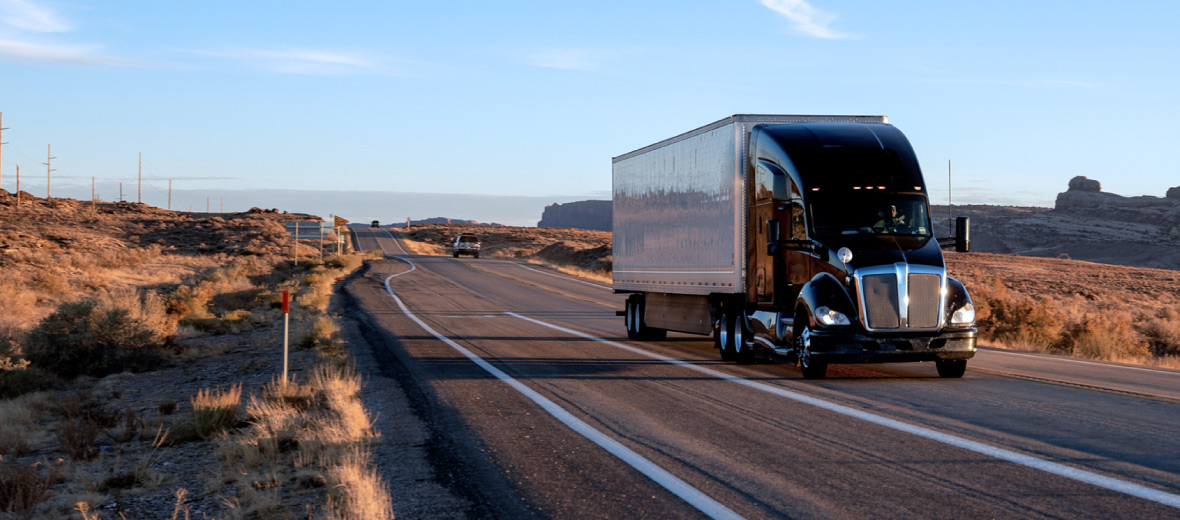
Key Insights
- The global freight trucking market is valued at $2.2 trillion.
- There are 3.54 million drivers employed in the U.S. trucking industry.
- In 2025, the electric truck industry is valued at $5.92 billion and is projected to soar to $38.76 billion by 2032.
- The U.S. has 13 million large trucks, accounting for 5% of all registered vehicles.
- The global market for AI fleet management software is projected to reach $14.4 billion by 2030.
The trucking industry is changing. As technology advances and the demand for electric vehicles increases, many wonder about future transportation trends. That’s why we put together the top trucking industry statistics for 2025 and beyond.
Over 60% of fleets using Geotab's decarbonization tools reported reduced emissions, highlighting the potential for technology to drive positive change. Driven by advancements in electric vehicles, increased workforce and rising market value, the trucking industry is set to be stronger than ever, with projected growth over the next six years.
Let’s look at some of the key statistics to understand the future of the trucking industry.
Trucking industry forecast & trends
The trucking industry is currently worth a whopping $2.2 trillion globally and $532.7 billion in the U.S. But what do the transportation trends look like in the coming years? The trucking industry forecast shows it's projected to grow at a rate of 5.4% with a value of $3.4 trillion by 2030.
1. The freight trucking market in the U.S. is estimated to reach $532.7 billion.
2. The global market for freight trucking is estimated to reach $2.2 trillion.
3. Trucking accounts for $940.8 billion in gross freight revenue in the U.S.
4. The freight trucking market is projected to reach $3.4 trillion by 2030, growing at a rate of 5.4%."
5. Forty-two percent of fleet professionals believe customers will demand more fleet sustainability initiatives in the next one to three years.
6. Ninety-six percent of U.S. trucking fleets operate 10 or fewer trucks, and 99.7% of U.S. carriers operate 100 or fewer trucks.
7. Trucks transported nearly two-thirds of the value of goods traded between the U.S. and Canada.
8. Trucking revenues account for 80.7% of the U.S. freight bill.
9. Heavy-duty electric trucks are expected to account for less than 7% of the electric truck market in 2026, mainly due to costs.
10. Driver wages climbed 15.5% to $0.724 per mile.
11. Total marginal costs surged 21.3% to $2.251 per mile.
12. Employment of truck drivers is projected to grow 4% by 2032.
13. Trucking supports 8.4 million jobs, up 405,000 in 2023.
14. EV adoption amongst Geotab-connected fleets is slowly increasing, with adoption being much higher in Europe at an average of 2.03% of total fleet vehicles vs. 0.45% in North America.
15. The global market for AI fleet management software was valued at $5.2 billion in 2024 and is projected to reach $14.4 billion by 2030.
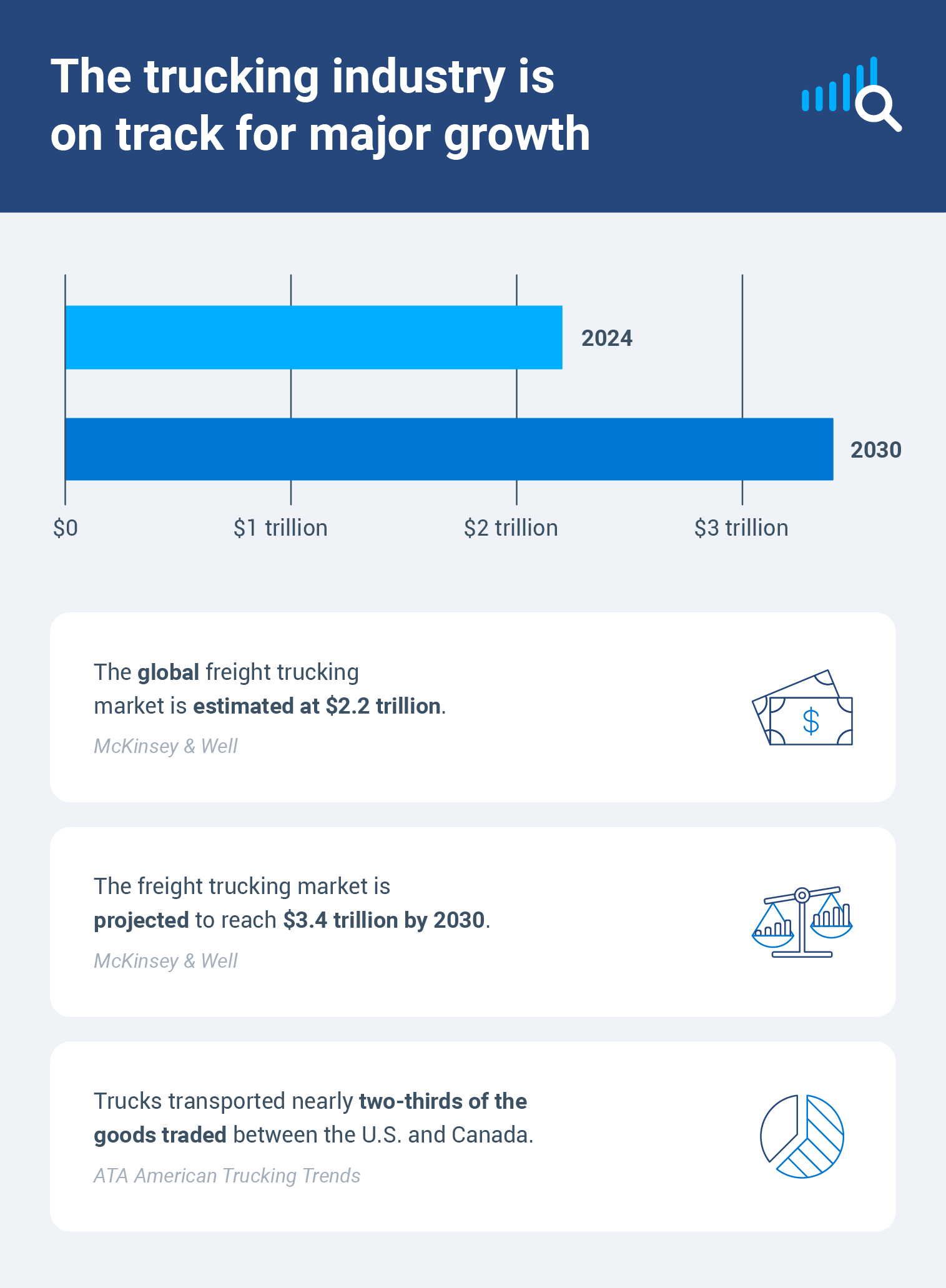
Vehicle trucking statistics
While cargo and Class 8 trucks seem to dominate the road, the trucking industry is a complex ecosystem of diverse vehicle types with varying gross vehicle weights. Understanding the entire spectrum, from light-duty trucks to heavy haulers, is crucial for grasping the industry's full scope and impact.
16. There are 14 million single-unit trucks in the U.S., accounting for 5% of all registered vehicles.
17. 11.46 billion tons of freight is moved by U.S. trucks annually.
18. Trucking accounts for 72.6% of total domestic freight tonnage.
19. Light-duty trucks have a fuel efficiency of 19.5 miles per gallon.
20. The average annual mileage for trucks is 9,800 miles.
21. In the first quarter of 2024, 113,169 commercial trucks were sold, a 4.1% decline from the previous year.
22. Class 8 truck sales fell by 14% compared to the previous year.
23. Truck inflation rose by 3.4% in 2024, with fleets facing continued high truck payments in 2025 and 2026 due to financing from 2022 purchases.
With thousands of trucks on the road each day, understanding road crash statistics is crucial. Since large trucks account for nearly 10% of fatal traffic crashes, implementing a robust fleet safety program is essential to protect drivers and other motorists on the road.

24. The trucking industry invests $14 billion in safety measures annually.
25. Large truck collisions cause 5,936 fatalities annually, some of which are due to drowsy driving.
26. Large truck collision fatalities increased by 2% compared to the previous year.
27. Large trucks account for 9.6% of all fatal traffic collisions in the U.S.
28. Seventy percent of fatalities in large truck collisions involve occupants of other vehicles.
29. Seventy-six percent of fatal large truck collisions occur on weekdays.
30. Large truck drivers are less likely to have previous license suspensions than drivers of other vehicle types.
31. Large truck drivers are more likely to have previous crashes compared to drivers of other vehicle types.
32. Fifteen percent of large truck occupants weren't wearing seatbelts in fatal crashes, with a 40% fatality rate compared to 8% for those wearing seatbelts.
33. Only 3% of large truck drivers involved in fatal crashes are the result of alcohol impairment.
34. Geotab-Connected Commercial Vehicles see a global average improvement of 17.45% in millions of miles driven prior to a collision.
Simplify driver safety with predictive fleet management solutions. Assess risks, track data and optimize your bottom line with Geotab’s suite of tools.
Explore fleet safety solutions
Truck driver statistics
The trucking industry is a cornerstone of the trade economy, employing a vast workforce that keeps goods moving across the world. With 3.54 million drivers hauling 11.46 billion tons of freight annually in the U.S. alone, the job outlook for truck drivers looks promising for 2024 and beyond.
35. There are 3.54 million drivers employed in the U.S. trucking industry.
36. There are 324,200 truck drivers employed in Canada.
37. Truck driver employment increased by 1.5% from the previous year.
38. Women represent 8.1% of truck drivers, marking a seventh consecutive annual increase.
39. Truck drivers earned an average hourly wage of $31.20 in June 2024.
40. The average annual wage for truck drivers is currently $73,147 in the U.S., up from the median $54,320 in 2023.
41. There are 922,854 independent owner-operators in the trucking industry.
42. Owner-operators comprise 11.1% of the truck driver workforce.
43. Just 15.3% of CDL holders are Hispanic or Latino, compared to 24.4% of the general U.S. labor force.
44. CDL holders reported higher rates of potential disabilities, particularly hearing and ambulatory difficulties, than the U.S. labor force overall.
Electric trucking industry statistics
With diesel semi-trucks contributing a staggering 18% of U.S. vehicle emissions, the need for cleaner alternatives and autonomous trucks arises. While electric trucks currently represent a small portion of the market, the industry is experiencing rapid growth. Valued at $5.92 billion in 2025, the electric trucking industry is projected to soar to $38.76 billion by 2032.
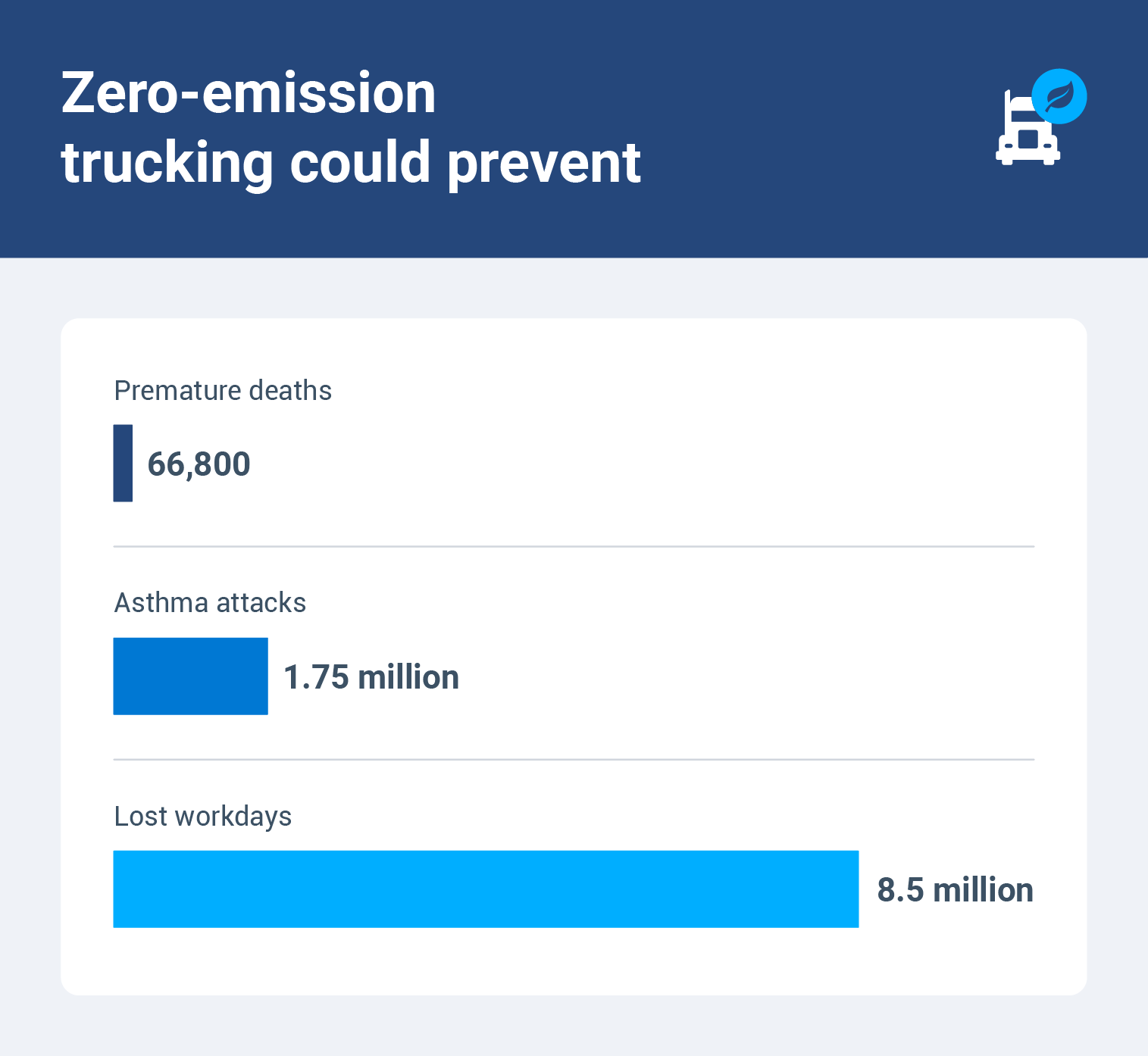
45. Diesel semi-trucks contribute 18% of U.S. vehicle emissions.
46. Transitioning to zero-emission trucking could prevent 66,800 premature deaths, 1.75 million asthma attacks and 8.5 million lost workdays by 2050.
47. Electric trucks offer a 13% lower total cost of ownership per mile compared to diesel, with battery prices at $135/kWh.
48. Electric heavy-duty trucks cost over three times more than diesel counterparts.
49. Class 8 electric trucks can save $200,000 over 15 years compared to their diesel counterparts.
50. The EV trucking market grew from $3.99 billion in 2024 to $5.92 billion in 2025, a compound growth rate of 48.4%.
51. The EV trucking market is projected to grow to $38.76 billion by 2032.
52. EV battery costs are expected to drop to $40-60 per kWh by 2030.
53. The 50-250 kWh battery capacity segment dominates the EV trucking market.
54. North America's electric truck market accounts for $3.9 billion in revenue.

Trucking industry challenges
As severe driver shortages loom, over 3 million positions are left unfilled globally. This crisis is exacerbated by an aging workforce and a relatively low number of young drivers entering the industry.
The demanding nature of the job, coupled with rising operating costs including $2.25 per mile for fuel, maintenance and other expenses, poses significant challenges for over-the-road trucking companies.
55. Driver-related costs were cited by 85% of truckers as a top industry challenge.
56. Insurance costs and liability were ranked as the second biggest industry challenge by 66% of truckers.
57. Globally, only 12% of drivers are below 25, and just 6% are women.
58. Driver shortages are forecast to double in 5 years globally.
59. Currently, over 3 million unfilled truck driver positions exist globally.
60. Trucking operating costs increased by 0.8% in 2024, reaching a new high of $2.27 per mile.
61. Repair and maintenance costs increased 12% to $0.196 per mile between 2021 and 2022 but only 3.1% between 2022 and 2023.
62. Truck drivers are at a higher risk for developing cardiovascular diseases due to their sedentary lifestyle.
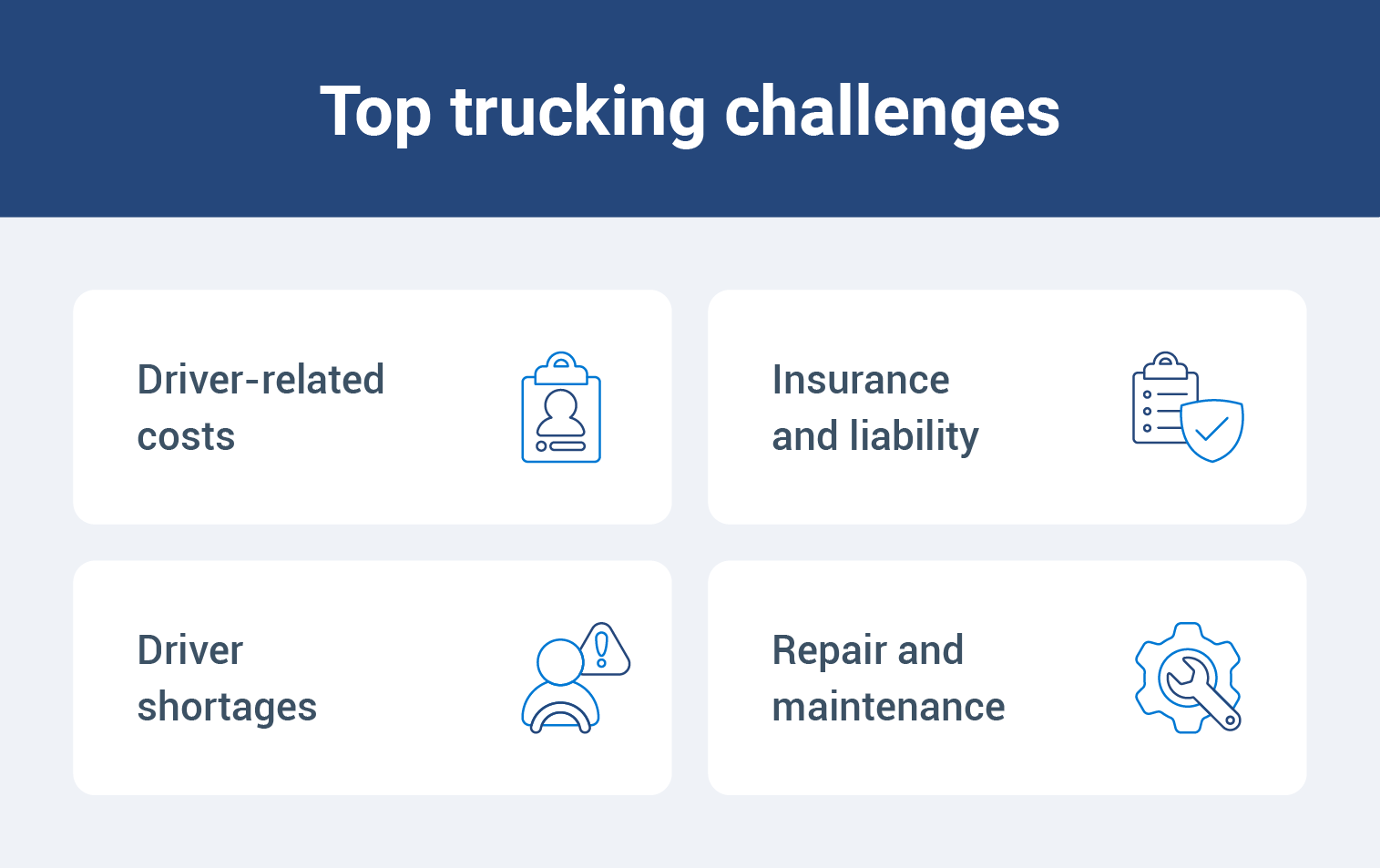
Grow your fleet with the help of automation
Based on these trucking industry statistics, it’s clear that the industry is continuing to grow, but not without challenges. Fleet maintenance, compliance and data tracking are critical areas that significantly impact a fleet's efficiency and profitability. By leveraging advanced technologies and data-driven insights, fleet managers can optimize operations, reduce costs and improve driver safety.
As one of the best fleet management software programs, Geotab offers a comprehensive solution to tackle the challenges of fleet growth. Our fleet management platform provides real-time visibility, predictive maintenance and compliance tools to help you streamline operations and make data-driven decisions.
Subscribe to get industry tips and insights
Frequently Asked Questions
The trucking industry is growing. The freight trucking market is currently estimated at $2.2 trillion and is projected to reach $3.4 trillion by 2030, growing at a rate of 5.4%.
Yes, there are currently 3.54 million drivers employed in the U.S., and employment is projected to grow 4% by 2032.
Eleven percent of truck drivers are owner-operators (or 922,854 drivers).
The global trucking market is valued at $2.2 trillion. The U.S. market is valued at $532.7 billion and generates $940.8 billion in gross freight revenue, emphasizing its significant domestic impact.
Eight percent of truck drivers are women, marking the seventh consecutive annual increase.
The average hourly wage of a truck driver is $31.20, with the median annual wage at $54,320.
The Geotab Team write about company news.
Table of Contents
Subscribe to get industry tips and insights
Related posts


The impact of unproductive idling on police vehicle service life
June 10, 2025
3 minute read

Multi-stop route planners: A fleet manager's guide + best tools in 2025
June 5, 2025
5 minute read
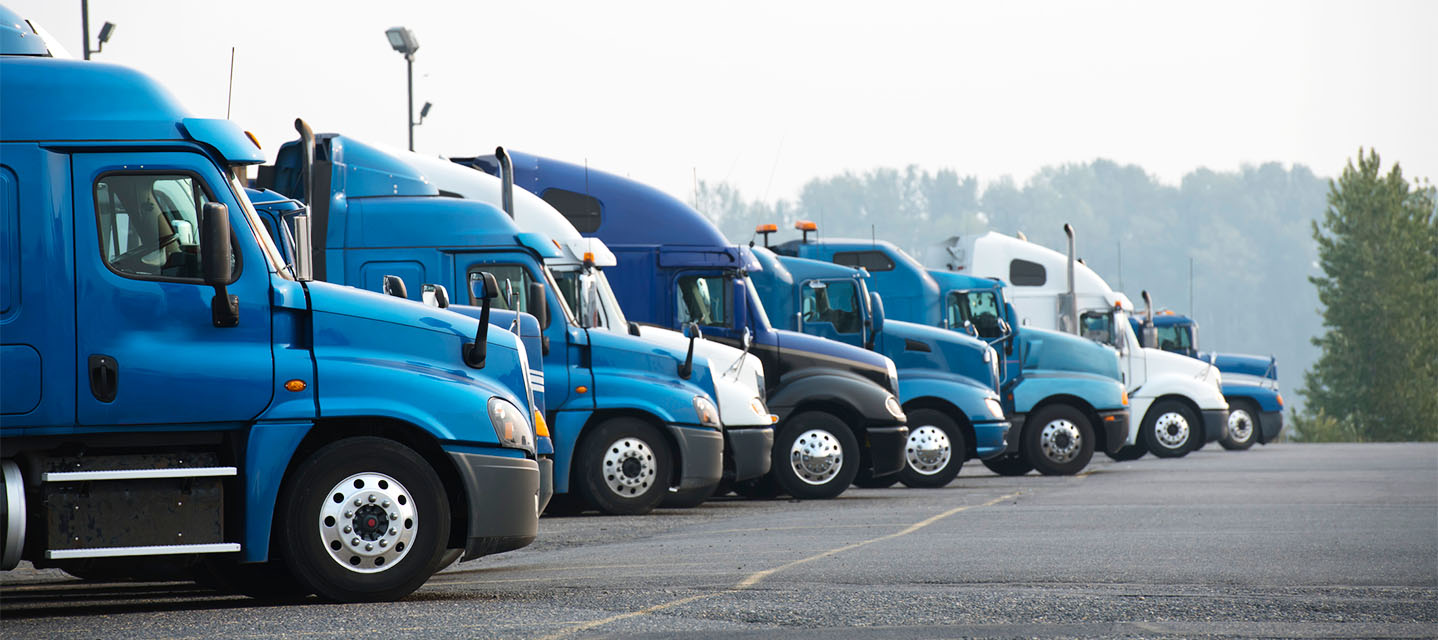
Commercial truck insurance cost: Rates by state + how to save
June 5, 2025
5 minute read

